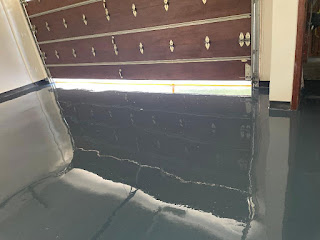Epoxy floors residential is a popular choice of flooring in both homes and offices. using resin epoxy for strength and durability. Its strong adhesive and easy maintenance make it an appealing choice for flooring in entryways, kitchens, basements, laundry rooms, patio or swimming pool areas, and many other areas.
Unlike traditional tile, plastic or linoleum flooring, a properly applied and sealed coat of epoxy will last for years. Its easy to apply system allows homeowners to lay it down on their own time and again. Clean up is a breeze with no special techniques, equipment or cleaners. All you need is a clean floor.
Epoxy Floor Benefits
Epoxy Floors Residential provides strength, durability and safety features that have made it a popular choice for commercial and industrial floors. It can be used on stairs, walkways and patios.
The strength of Epoxy Floors Residential can be attributed to the durability of its adhesive. When applied properly, it will bond to your concrete floor.
The epoxy resin and hardeners provide a strong, durable and safe surface. Epoxy flooring is resistant to heat, chemicals and moisture.
It is an excellent choice for kitchens, bathrooms and laundry rooms. In homes, it is an attractive alternative to tile, linoleum or other flooring.
Best Way To Clean Epoxy Floors
Floor cleaning is one of the easiest ways to maintain your flooring. Simply wipe with a damp rag or mop. There are many cleaning solutions available on the market.
All you have to do is find the right one for your floor. You can use dish soap, a floor cleaner or a non-yellowing dish washing liquid. For stairs and walkways, you can use degreaser.
For flooring, you can use nail polish remover or liquid nail polish stripper.
The solvent can be used for certain spills or spot cleaning.
In areas where there is high traffic, such as kitchens, laundry rooms or patios, it is important to use reliable cleaning oil to protect your flooring.
Oil based cleaners work well on tile, linoleum or carpet. A reliable cleaning oil will prevent scratches from shoes, furniture and other outdoor equipment.
You should ensure that you are using reliable oil, not a floor cleaner. The solvent-based products often dull the shine of your flooring.
To protect the finish of your floor, you can use floor protectors, which will work well on wood or tile. They are available in hardwood (walnut, maple, ash, etc.) and softwood (beech, hickory, etc.). You can also use urethane protectors for tile and wood floors.
They are available in a firm clear protector, which can be mixed with water to get a semi-gloss or satin protective finish, or a water-resistant clear protector, or a semi-gloss or satin protective semi-water resistant clear protector.
There are also wax pencils which are dipped in wax to give your floor a dull finish. You can also use a polyurethane protector, wax pencils, lacquer pencils and acrylic pencils.
In areas where there is high traffic, such as your kitchen, living area or basement, you can use floor protectors for spills, crumbs and dust. They will be easy to use and make your floor look as good as new.
For non-oil based cleaning solutions, you can use nail polish remover or nail polish thinner. When you clean the finish of your floor, you can use nail polish remover, nail polish remover or nail polish thinner. The polish remover is suitable for oil-based finishes.
If you are cleaning your floor for your car, you can use nail polish remover on oil-based finishes, nail polish remover on water-based finishes, and nail polish remover on semi-oil-based finishes.
You can use sealers to protect your floor and give it a shine. You can use the acrylic or the polyurethane sealer. The acrylic or polyurethane sealer will be suitable for oil-based finishes, the water-based finishes and the semi-oil-based finishes. For information on concrete grinding and polishing, view our blog post
